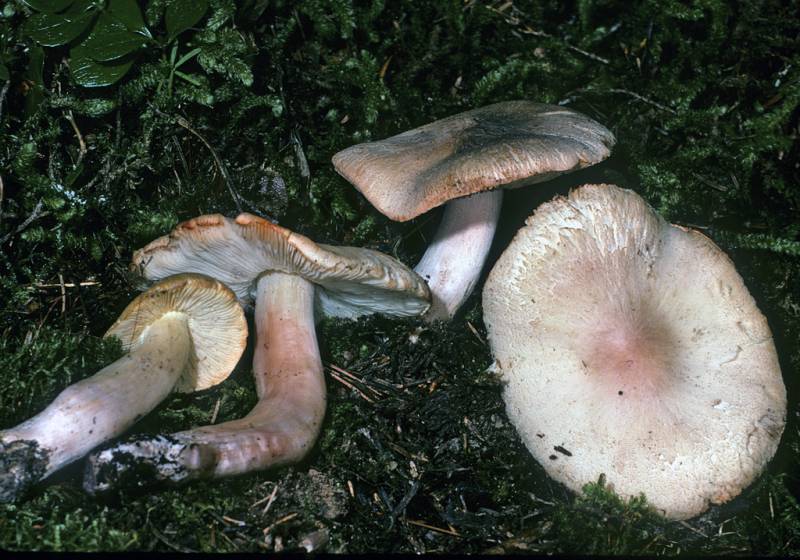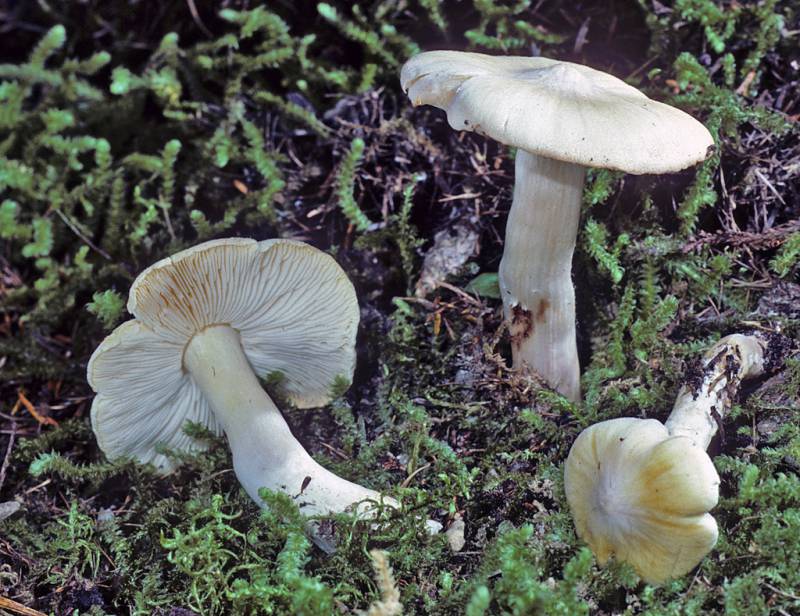Habitat: Conifer forests, especially with pine
Conservation Status: Not of concern
Cap: 3-16 cm wide, broadly conic to bell-shape when young, becoming broadly convex to plane, typically with a conspicuous blunt or acute umbo, somewhat thin and fragile; surface dry appressed-fibrillose overall when young, developing tiny scales near the margin; dark brownish gray to dark green on the umbo or nearly overall at first, becoming yellowish green to pale yellowish green or grayish yellow with darker streaks and umbo, usually then fading to yellowish buff nearly overall, sometimes when salmon tinges, especially near the edge; margin incurved at first, becoming wavy and uneven, often uplifted and split. Flesh: greenish, fading to buff at maturity; odor farinaceous; taste farinaceous or disagreeable. Gills: arcuate when young, becoming sinuate, moderately close to subdistant; yellowish to greenish buff, becoming whitish to buff at maturity, older specimens often developing pinking orange stains on the edges, faces sometimes marked with transverse white stripes; lamellulae numerous. Stalk: 4.5-18 cm long, 1-3 cm thick, equal or sometimes enlarged downward with a rounded base, or ventricose, solid; surface dry, fibrillose; pale greenish yellow on the upper portion and whitish below, or sometimes whitish overall, often developing pinkish orange stains.
Sources: Bessette, Alan E., Arleen R. Bessette, William C. Roody, and Steven A. Trudell. Trichoolomas of North America. Austin, University of Texan Press, 2013.
PNW Herbaria: Specimen records of Tricholoma davisiae in the Consortium of Pacific Northwest Herbaria database.
CalPhotos: Tricholoma davisiae photos.





